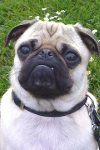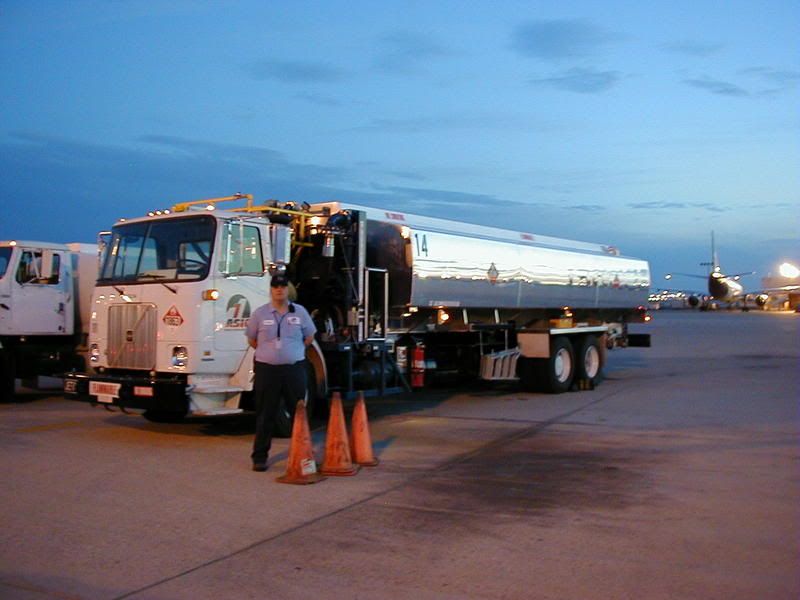DC-3 Question
Moderators: Guru's, The Ministry
- petermcleland
- Red Arrows

- Posts: 5201
- Joined: 25 Jul 2004, 10:28
- Location: Dartmouth, Devon
- Contact:
Well they have 14 cylinders and a max of 2700 RPM but I've just seen mention of a reduction ratio of 1.8...So I guess it must have a gearbox :think:
Regards,

http://www.petermcleland.com/
Updated 28/8/2007
My Channel
http://www.youtube.com/user/petermcleland?feature=mhee

http://www.petermcleland.com/
Updated 28/8/2007
My Channel
http://www.youtube.com/user/petermcleland?feature=mhee
- Garry Russell
- The Ministry
- Posts: 27180
- Joined: 29 Jan 2005, 00:53
- Location: On the other side of the wall
Hi Peter
The original starting post reffered to the whole engine :k:
I know it's a fix block.I meant the whole interal revoling part like the crankshaft as opposed to the very front via a gear.
Bristol Hercules for instance revolved the opposite way to Merlins
Garry
The original starting post reffered to the whole engine :k:
I know it's a fix block.I meant the whole interal revoling part like the crankshaft as opposed to the very front via a gear.
Bristol Hercules for instance revolved the opposite way to Merlins
Garry
Garry

"In the world of virtual reality things are not always what they seem."

"In the world of virtual reality things are not always what they seem."
- Garry Russell
- The Ministry
- Posts: 27180
- Joined: 29 Jan 2005, 00:53
- Location: On the other side of the wall
- blanston12
- Battle of Britain

- Posts: 3248
- Joined: 28 Jun 2004, 20:45
- Location: San Francsico, California
Normally aircraft that had counter rotating props, the counter rotating engine is a mirror image of the standard normal rotating engine.
While there were vast numbers of R-1820 and R-1830 engines made, only a limited number of them would be counter rotating. Even if some DC-3's came out of the factory with counter rotating engines its likely that over time a standard engine would replace the counter rotating engine as replacement engines and replacement parts are more plentiful for them.
An other possibility if no DC-3's came out of the factory that way that someone could have installed a counter rotating prop/engine as the mounts would all be the same.
Someone at M$ must have seen one in that configuration for them to go though the effort to change there model between versions. But if peter has not seen one they must be very rare.
While there were vast numbers of R-1820 and R-1830 engines made, only a limited number of them would be counter rotating. Even if some DC-3's came out of the factory with counter rotating engines its likely that over time a standard engine would replace the counter rotating engine as replacement engines and replacement parts are more plentiful for them.
An other possibility if no DC-3's came out of the factory that way that someone could have installed a counter rotating prop/engine as the mounts would all be the same.
Someone at M$ must have seen one in that configuration for them to go though the effort to change there model between versions. But if peter has not seen one they must be very rare.
Joe Cusick,

I am serious, and don't call me Shirley.

I am serious, and don't call me Shirley.
- petermcleland
- Red Arrows

- Posts: 5201
- Joined: 25 Jul 2004, 10:28
- Location: Dartmouth, Devon
- Contact:
Here is a sectioned one:-

I think there is a "Sun & Planet" type reduction gear at the right end (Propeller) :think:
It is a Pratt & Whitney Twin Wasp...double row 14 cylinder radial.

I think there is a "Sun & Planet" type reduction gear at the right end (Propeller) :think:
It is a Pratt & Whitney Twin Wasp...double row 14 cylinder radial.
Regards,

http://www.petermcleland.com/
Updated 28/8/2007
My Channel
http://www.youtube.com/user/petermcleland?feature=mhee

http://www.petermcleland.com/
Updated 28/8/2007
My Channel
http://www.youtube.com/user/petermcleland?feature=mhee
- Kevin Farnell
- Vintage Pair

- Posts: 2083
- Joined: 26 Jun 2004, 13:29
- Location: Willingham, Cambridge UK.
- Contact:
And I should have said 'different' not 'differnet' :doho:petermcleland wrote:Yes indeed...I should have said counter-rotatingKevin Farnell wrote:'Contra-rotating' and counter-rotating' are two totally different engineering designs. The first, being two props in tandem' turning in opposite directions . The second, props on differnet engines, turning in opposite dirctions.petermcleland wrote:Just another bug I guess...I don't think there ever was one with contra-rotating props :think:
We all make mistakes.
Regards
Kevin
- Chris Trott
- Vintage Pair

- Posts: 2591
- Joined: 26 Jun 2004, 05:16
- Location: Houston, Texas, USA
- Contact:
All P&W radials of more than 1000HP have reduction gears. Most of the engines below this do as well, but it's not absolute. The reason for this is mainly to reduce torque at the propeller shaft. One of the biggest problems with radials is their prodigeous torque. By installing reduction gears, it allows for more manageable torque levels to be exerted upon the shaft. This is the biggest reason for the problems that were encoutered with the R4360 and R3350 and the advent of some of the very sophistocated reduction gearing present on them.
Also, the entire engine operates either clockwise or counter clockwise, the reduction gear only changes the input and output RPMs. To place a reversing gear on the output shaft to swap the direction of the prop would add weight to one side of the aircraft that could not be matched correctly on the other side, so it's simply easier to build engines that turn one way or the other. This is the reason you don't find many aircraft (civilian or military) with counter rotating engines. It's extremely expensive to have to maintain two separate spares stores when you have two engines that externally are identical but have different cam shafts, accessories, reduction gears, governors, and propellers. With aircraft as big as the DC-3, there is enough moment on the aircraft to counter any adverse torque presented by both engines operating in the same direction.
Also, the entire engine operates either clockwise or counter clockwise, the reduction gear only changes the input and output RPMs. To place a reversing gear on the output shaft to swap the direction of the prop would add weight to one side of the aircraft that could not be matched correctly on the other side, so it's simply easier to build engines that turn one way or the other. This is the reason you don't find many aircraft (civilian or military) with counter rotating engines. It's extremely expensive to have to maintain two separate spares stores when you have two engines that externally are identical but have different cam shafts, accessories, reduction gears, governors, and propellers. With aircraft as big as the DC-3, there is enough moment on the aircraft to counter any adverse torque presented by both engines operating in the same direction.
- Garry Russell
- The Ministry
- Posts: 27180
- Joined: 29 Jan 2005, 00:53
- Location: On the other side of the wall
That makes sense Chris
Imaging a port engine failure and all the spares in the hangar are Starboards.
The only civilian airliner that I can think of off hand with counter rotating was the Jetstream 41
There may well be other turbo props but TBH I've not looked.
Having said that the J41 gave itself away by being different so it may be unique on the types I've seen myself or I may have noticed.
A few light twins seemd to have them
Garry
Imaging a port engine failure and all the spares in the hangar are Starboards.
The only civilian airliner that I can think of off hand with counter rotating was the Jetstream 41
There may well be other turbo props but TBH I've not looked.
Having said that the J41 gave itself away by being different so it may be unique on the types I've seen myself or I may have noticed.
A few light twins seemd to have them
Garry
Garry

"In the world of virtual reality things are not always what they seem."

"In the world of virtual reality things are not always what they seem."
- Chris Trott
- Vintage Pair

- Posts: 2591
- Joined: 26 Jun 2004, 05:16
- Location: Houston, Texas, USA
- Contact:
Most of the Cessna Twins have counter-rotating engines. It was done to allow as small a wing and tail as possible to fit inside what was then the "standard" T-Hangar size in the US. That T-Hangar was not much larger than a Cub or Cessna 140. Seems to have worked at least a little bit since Cessna sold more light twins than any other manufacturer.
- petermcleland
- Red Arrows

- Posts: 5201
- Joined: 25 Jul 2004, 10:28
- Location: Dartmouth, Devon
- Contact:
Actually, I realise now that big radials would have to have a reduction gear to prevent the propeller tips from going supersonic...Which they did anyway on the Harvard. The Twin Wasp with an engine RPM of 2700 would need to reduce that by about half to keep the propeller subsonic 
Regards,

http://www.petermcleland.com/
Updated 28/8/2007
My Channel
http://www.youtube.com/user/petermcleland?feature=mhee

http://www.petermcleland.com/
Updated 28/8/2007
My Channel
http://www.youtube.com/user/petermcleland?feature=mhee



